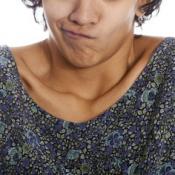 Editor’s note: If you or someone you know is in crisis, please click here for information about seeking help.
Editor’s note: If you or someone you know is in crisis, please click here for information about seeking help.
Cutting is a popular way for teens to self-injure without the intent of suicide. Using scissors, razor blades, pins, pens, or other sharp objects, some teenagers puncture or cut their skin in various places on the body. If you’re a parent, you are probably wondering, “Why would they do that?” The answers may surprise and scare you.
Simply put, cutting is a maladaptive coping mechanism during times of stress and anxiety that is rarely accompanied by suicidal thoughts. According to the American Association for Marriage and Family Therapy, self-harming behavior such as cutting has no single cause. It does not discriminate across cultural and socioeconomic levels, but the behavior is predominately carried out by females.
Reasons behind teen cutting are varied. Often it can be categorized by those who already feel numb as a way to experience intense emotion and pain. Numbness may be due to being emotionally overwhelmed for too long, which almost short-circuits the system into a feeling of dullness—neither happy nor sad. Teens who feel numb often identify that the only way to feel alive is to cut.
Another way to categorize cutting is as a release of emotions, similar to a drain when the sink is overflowing. Teens who feel burdened by stress, anxiety, depression, and other emotions may use cutting to vent the unwanted leftovers of those difficult feelings.
Other reasons for cutting include an intense and overriding feeling of aloneness, feeling helpless, and feeling the need to punish or blame for something that happened.
The theory behind why teens use cutting as a coping mechanism reasons that endorphins play a major role. When teens cut, endorphins rapidly invade the bloodstream, resulting in a feeling of pleasure and relief. For some teens, the cutting and the endorphin release make them feel “high.”
Take for example, a 16-year-old girl who is a high academic achiever, member of the elite volleyball team, and a positive role model for her younger sisters. She is an all-around overachiever, earning money babysitting and as a lifeguard, striving to excel in school to make sure she gets into a prominent university. Her volleyball team travels on the weekends, and she is looked at as a leader to the other members. In addition, she volunteers at her church and with her community. She dresses well and in fashion, and is always attempting to make sure her hair is perfect. Although she doesn’t love her body, she knows it could be worse, since she’s an athlete and in somewhat decent shape physically.
Emotionally, however, she’s not in shape, nor positive, nor excelling. She is overburdened by academia, struggling to achieve all A’s in her advanced classes. She has to study from the minute she gets home from school until volleyball practice, and then more upon returning. She is not sure her grades will get her into a “good enough” college. She is worried that her best friend is mad at her, and she’s certain that her father hates her. To make matters worse, her right knee has been bothering her, but she doesn’t tell anyone for fear that her team will be mad at her. She has had to cancel when invited out because she had too much homework and she promised her best friend she’d be available if she needed to talk.
At first glance, this teen seems to have a full and rich life, with opportunity abounding. However, she’s so overwhelmed that at night she uses her desk scissors to slice her wrists repeatedly. To make sure no one suspects anything, she hides the bloody tissues at the bottom of the trash can. She wears stacks of bracelets to cover the damage so no one asks. She doesn’t know what else can release the pressure she feels from school, family, friends, and her team. She heard about cutting during lunch a few years ago, and now uses scissors to pour her emotions out.
This is real life for some teens. As much as parents are disgusted by the idea, and instinctively react with shock about what their child has done to their body, it is an unwanted aftereffect of overworked, overscheduled, overwhelmed children. Never before have we put the same amount of pressure on our children and teens to succeed academically, socially, and beyond.
While it may not make sense that they cut their bodies, it makes sense that they find a way to release the pressure. Without learning new coping skills and understanding their triggers, teens often end up alone in their pressure-cooker lives. Through counseling, teens can learn how to handle distress, how to prioritize in their lives, and how to communicate about their feelings.

The preceding article was solely written by the author named above. Any views and opinions expressed are not necessarily shared by GoodTherapy.org. Questions or concerns about the preceding article can be directed to the author or posted as a comment below.

 Ever Wondered Why You Bite the Insides of Your Cheeks?
Ever Wondered Why You Bite the Insides of Your Cheeks? Teens in Alternative Subcultures More Likely to Self-Harm
Teens in Alternative Subcultures More Likely to Self-Harm Are We Too Busy Blaming Parents?
Are We Too Busy Blaming Parents?

Please fill out all required fields to submit your message.
Invalid Email Address.
Please confirm that you are human.
Leave a Comment
By commenting you acknowledge acceptance of GoodTherapy.org's Terms and Conditions of Use.